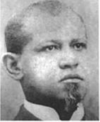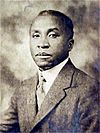Hotel Plaza site facts for kids
Quick facts for kids Hotel Plaza site |
|
|---|---|
| Lua error in Module:Location_map at line 420: attempt to index field 'wikibase' (a nil value). | |
| Location | on the Illinois River in Starved Rock State Park, Illinois |
The Hotel Plaza site (Ls-36) is located near Starved Rock, on the Illinois River across from the Zimmerman site (aka Grand Village of the Illinois. It is a multi-component site representing prehistoric, protohistoric and early historic periods, with the main occupation being an early Historic component associated with the French Fort St. Louis.
Early French explorers Joliet, Marquette, Allouez and Tonti were present at the Grand Village of Kaskaskia between 1673 and 1680. The Kaskaskia were a subdivision of the Illiniwek Confederacy. Other Illiniwek groups also had a presence at the site, most notably the Peoria, Tapouaro and Coiracoentanon. Later, other tribes such as the Miami and Shawnee were present at the site. In the fall of 1680 the village was burned down by an Iroquois war party and abandoned.
After the Grand Village was abandoned, in 1682 the French started building Fort St. Louis to reassure their Native American allies of their commitment. Shortly thereafter the Illinois and other tribes begin to gather nearby in hopes of obtaining protection.
The Hotel Plaza site is located near the site of an early 20th Century hotel on Starved Rock, within a few hundred yards of the former Fort St. Louis location.
History of archaeological investigations
In 1948 and 1949 the site was excavated under the auspices of the Illinois State Museum and the University of Chicago. Three grids were established: Grid A in 1948, and Grids B & C in 1949.
Significance
The Hotel Plaza site reflects a series of occupations going back thousands of years, but the main occupation consists of the Swanson complex and LaSalle component of the late prehistoric and early historic periods. The site adds some more detail to the occupation of the Starved Rock area at the time of European contact.
The LaSalle component is contemporaneous with the Danner component at the Zimmerman site and provides additional evidence of a Fort Ancient presence in the area in early Historic times. The connection with Madisonville Focus pottery suggests that the Shawnee may be the ethnic group behind Danner/LaSalle, but this is a matter of sharp debate among archaeologists.
Also the Swanson complex represents the presence of Late Woodland culture at Hotel Plaza. Some of the Swanson material is quite ancient and may date to A.D. 800 or earlier. It has been suggested that early Swanson culture may have evolved out of Middle Woodland Weaver Ware, which itself dates back to approximately B.C. 100.
On the other hand, at Hotel Plaza Swanson pottery is shown to be associated with European trade goods so there is strong evidence this culture also crossed over from the Prehistoric to early Historic period. However there has been no evidence to indicate which early Historic ethnic group (i.e. tribe) Swanson might represent.
 | Calvin Brent |
 | Walter T. Bailey |
 | Martha Cassell Thompson |
 | Alberta Jeannette Cassell |

